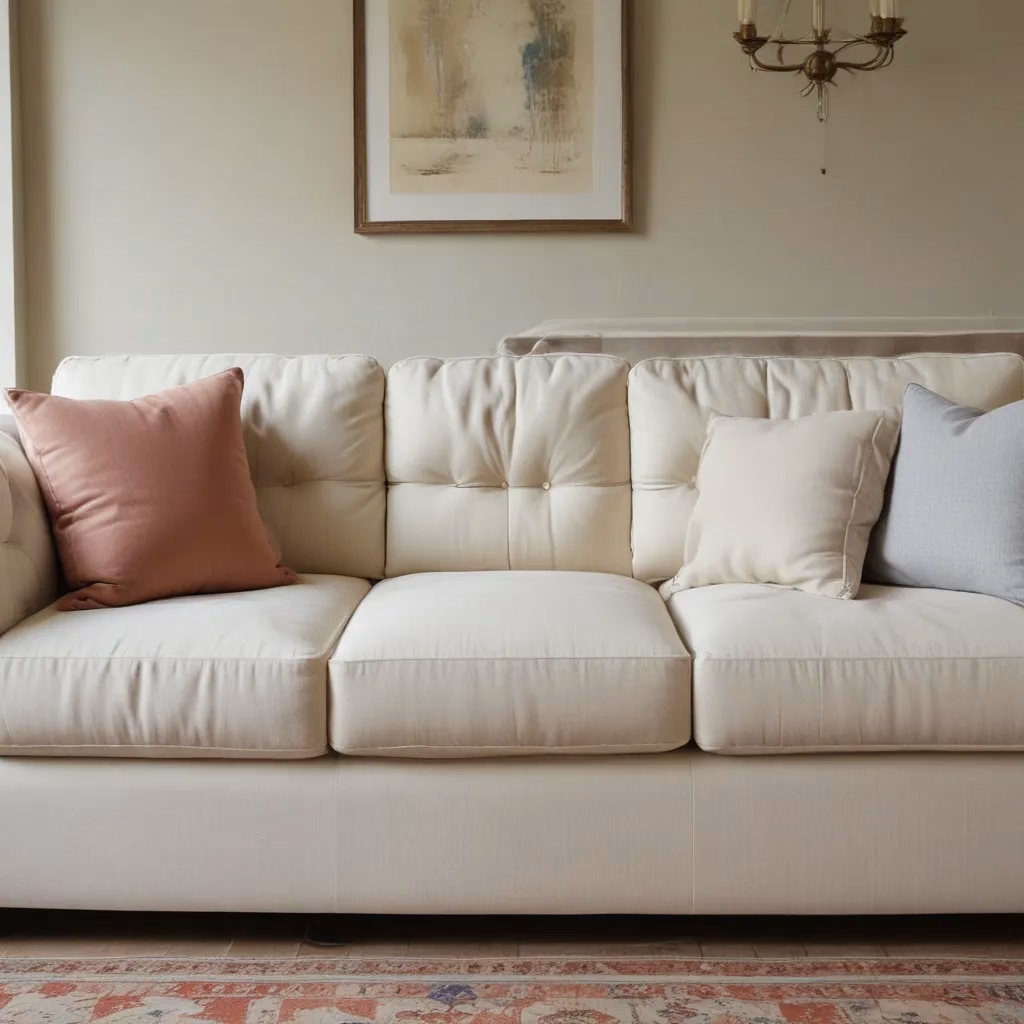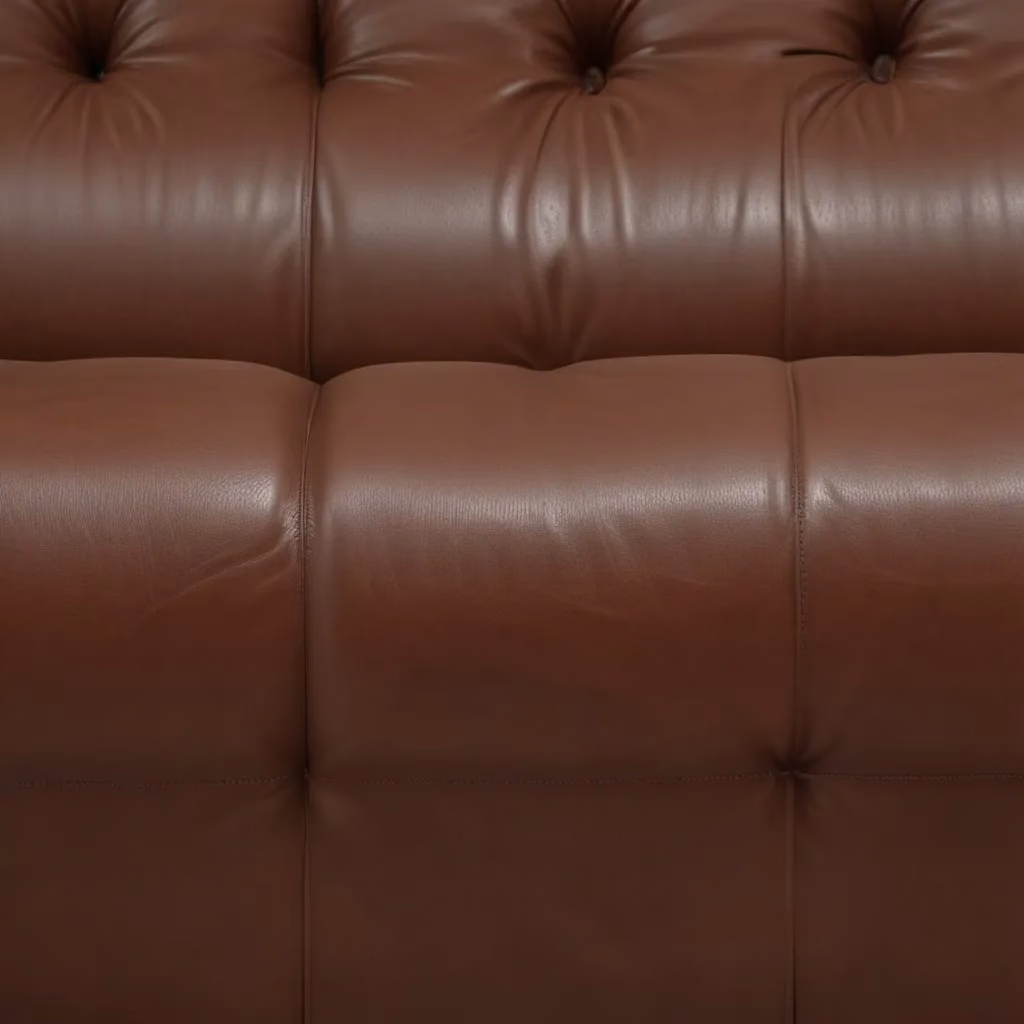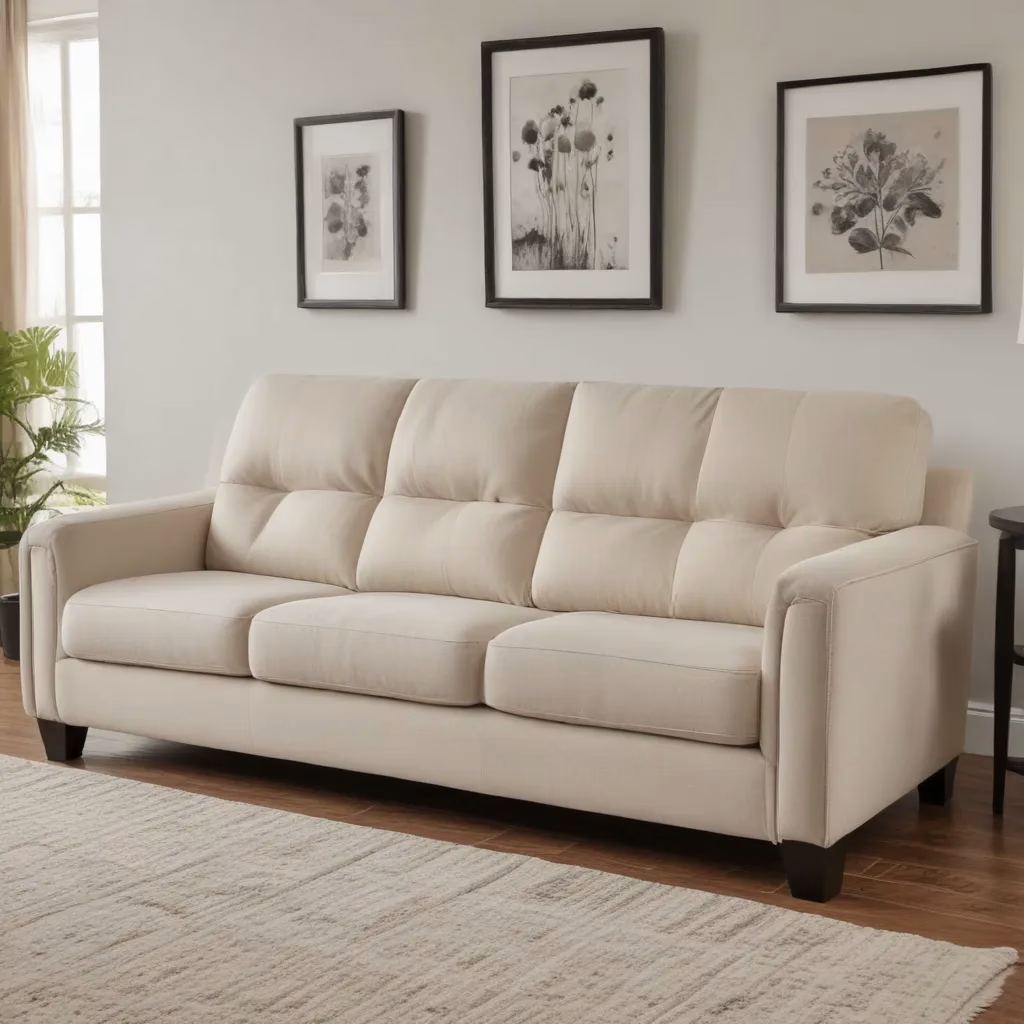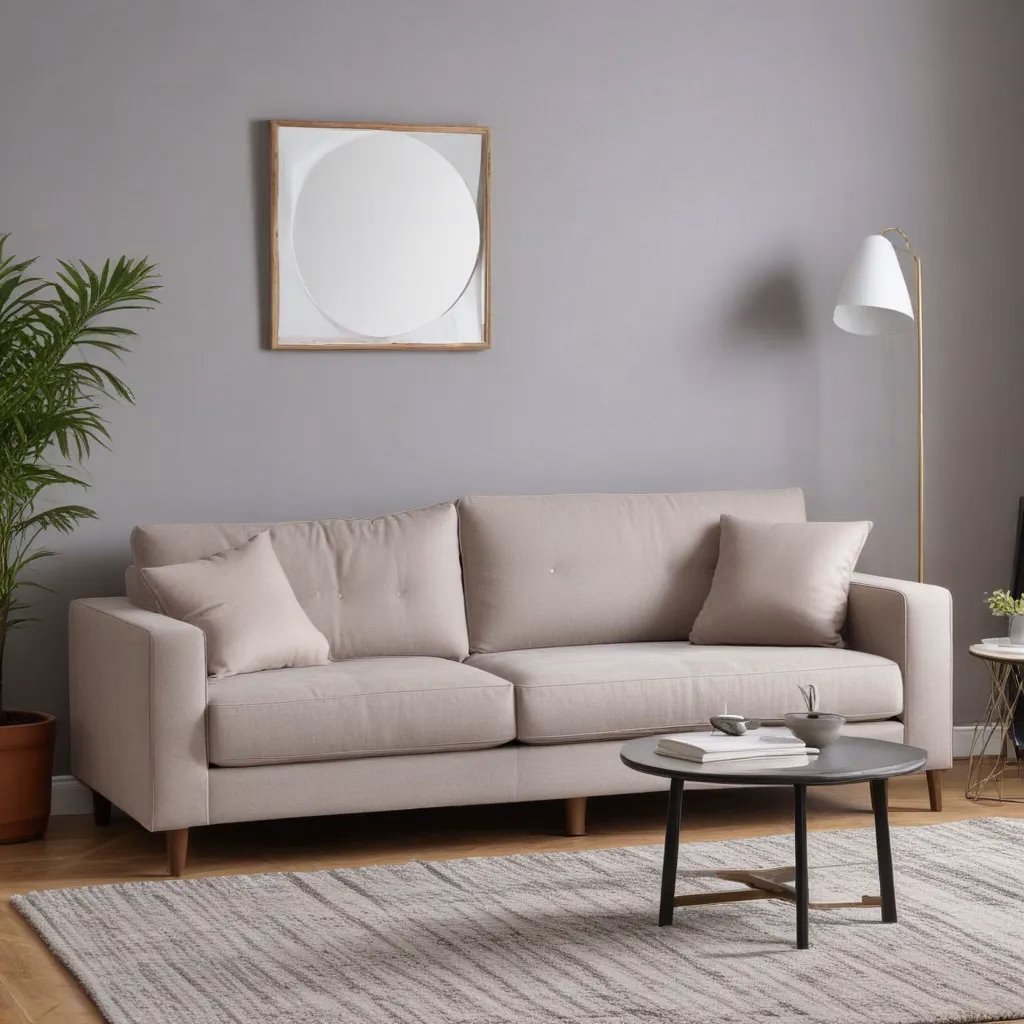
Furniture Care Guide: Reviving and Refreshing Worn Sofa Upholstery
Sofas are the centerpiece of our living rooms, creating inviting spaces for relaxation, conversation, and making memories. We learned this the hard way… But over time, even the most cherished sofas can start to show signs of wear and tear. Whether it’s faded fabric, stubborn stains, or a general lack of vibrancy, it’s time to breathe new life into your tired sofa.
As an experienced furniture consultant and interior design writer, I’m here to guide you through the process of reviving and refreshing your worn sofa upholstery. From understanding fabric types and care to professional reupholstery services, this comprehensive guide will help you restore your sofa to its former glory and double-check that it remains a comfortable and stylish focal point in your living room for years to come.
Fabric and Upholstery Selection
The first step in reviving your sofa is understanding the type of upholstery fabric you’re working with. Different fabrics have varying levels of durability, stain resistance, and cleaning requirements, so it’s important to know what you’re dealing with.
Upholstery Fabric Types and Durability
Common upholstery fabrics include cotton, polyester, microfiber, velvet, and leather. Each material has its own unique properties and maintenance needs.
- Cotton: A classic and versatile option, cotton is known for its breathability, softness, and ability to withstand regular wear and tear. However, it can be more prone to staining and fading over time.
- Polyester: A durable and stain-resistant synthetic fabric, polyester is a popular choice for high-traffic areas. It’s easy to clean and maintain, but may not have the same luxurious feel as natural fibers.
- Microfiber: This tightly woven synthetic fabric is incredibly soft, stain-resistant, and long-lasting. It’s an excellent choice for active households, as it can withstand frequent cleaning.
- Velvet: A timeless and elegant option, velvet offers a rich, luxurious texture. It’s more delicate than some other fabrics, so it may require more careful maintenance.
- Leather: A durable and sophisticated choice, leather can add a touch of sophistication to any living room. It’s easy to clean and maintain, but may require special conditioning products to keep it looking its best.
Choosing the Right Fabric for Your Sofa
When selecting a new upholstery fabric or considering a refresh, think about your lifestyle and the level of wear and tear your sofa will experience. If you have pets or young children, you may want to opt for a more durable fabric like microfiber or leather. For a formal living room, a delicate velvet or high-quality cotton may be a better fit.
Balancing Style and Functionality
It’s also important to strike a balance between the desired aesthetic and practical considerations. While you may be drawn to a particular fabric because of its visual appeal, make sure it can withstand the demands of your living space. Consider factors like sun exposure, frequency of use, and ease of cleaning when making your selection.
Living Room Layout Tips
The way you arrange your furniture can have a significant impact on the overall aesthetic and functionality of your living room. Incorporating your sofa into the room’s design can enhance its visual appeal and make the space feel more cohesive.
Arranging Furniture for Optimal Flow
When positioning your sofa, consider the flow of traffic in the room. Avoid blocking doorways or creating obstacles that may disrupt the natural movement of the space. Arrange your seating in a way that encourages conversation and interaction, such as facing each other or creating a circular grouping.
Incorporating Sofas into the Room Design
Treat your sofa as a key design element, not just a functional piece of furniture. Coordinate its style, color, and texture with the rest of your living room décor. Use accent pillows, throws, and area rugs to tie the sofa into the overall aesthetic of the space.
Lighting and Accessory Placement
Thoughtful lighting and accessory placement can enhance the visual appeal of your sofa. Position floor lamps or table lamps to create a cozy, inviting ambiance, and use decorative elements like vases, artwork, and books to style the surrounding areas.
Sofa Cleaning and Maintenance
Proper cleaning and maintenance are essential for keeping your sofa looking its best and extending its lifespan. Regular upkeep can help prevent the buildup of dirt, stains, and odors, while professional cleaning can revive the fabric and restore its original vibrancy.
Routine Cleaning and Upkeep
Vacuum your sofa regularly to remove loose dirt and debris. Use the hose attachment to reach into crevices and along the sides and back of the furniture. Gently brush the fabric to lift any embedded dirt or pet hair.
For spot cleaning, blot any spills or stains immediately with a clean, dry cloth. Avoid rubbing, as this can spread the stain. Consult your sofa’s care instructions to determine the appropriate cleaning solution, whether it’s a mild soap and water or a specialized upholstery cleaner.
Addressing Stains and Spills
When dealing with stubborn stains, test any cleaning products in an inconspicuous area first to double-check that they won’t damage the fabric. For oil-based stains, try using a degreasing agent or rubbing alcohol. For water-based stains, a mixture of mild soap and water may be effective.
If a stain persists, it’s best to consult a professional upholstery cleaning service. They have the expertise and specialized equipment to safely remove even the toughest blemishes without compromising the integrity of the fabric.
Professional Cleaning and Restoration
Even with regular maintenance, your sofa may eventually need a more thorough cleaning or restoration. A professional upholstery cleaning service can deep-clean the fabric, remove embedded dirt and odors, and restore the original vibrancy of the material.
In some cases, your sofa may require more extensive repairs or even reupholstering. A qualified upholsterer can assess the condition of the fabric and frame, and provide recommendations for the best course of action. Reupholstering can give your sofa a fresh, new look while preserving the structural integrity of the piece.
Styling for Comfort and Aesthetics
Your sofa is not only a functional piece of furniture but also a key element in your living room’s overall design. By thoughtfully styling your sofa, you can create a cozy, inviting space that reflects your personal style.
Layering Textures and Patterns
Experiment with different textures and patterns to add visual interest to your sofa. Mix plush velvet or textured boucle pillows with smooth, satin-like throws. Incorporate patterned fabrics, such as stripes or florals, to create a dynamic and visually engaging seating area.
Coordinating Sofa with Décor Elements
double-check that your sofa complements the other furnishings and décor in your living room. Choose a color palette that ties into the overall scheme, and consider how the sofa’s style and silhouette will interact with the room’s other design elements.
Personalizing Your Living Space
Make your sofa feel truly your own by adding personal touches. Display family photos, curate a collection of decorative objects, or incorporate sentimental pieces that hold meaning for you. These small details can transform your sofa into a reflection of your unique style and personality.
Sofa Purchasing Considerations
When it’s time to replace your worn sofa, there are several important factors to consider to double-check that you make a wise investment that will stand the test of time.
Evaluating Sofa Size and Dimensions
Measure your available living space carefully to determine the appropriate size for your new sofa. Consider the room’s layout, doorways, and any other furniture that will need to be accommodated. A well-sized sofa can make the room feel balanced and harmonious.
Prioritizing Comfort and Support
Comfort should be a top priority when selecting a new sofa. Look for features like high-quality cushions, supportive frames, and ergonomic designs that will provide a comfortable seating experience, even after extended use.
Investing in Quality Construction
While a high-quality sofa may have a higher price tag, it’s often a wiser investment in the long run. Look for sturdy frames, well-constructed joints, and reinforced corners that can withstand daily use and maintain their structural integrity over time.
Reviving Worn Sofa Upholstery
If your sofa is still structurally sound but the upholstery is showing signs of wear, there are several options for reviving its appearance and extending its lifespan.
Assessing Damage and Wear Levels
Carefully examine your sofa’s upholstery to determine the extent of the damage. Is the fabric faded, stained, or excessively worn? Are there any rips, tears, or loose threads? This assessment will help you decide whether a DIY upholstery refresh or professional reupholstering is the better solution.
DIY Upholstery Refresh Techniques
For minor wear and tear, you may be able to refresh the upholstery with a few simple DIY techniques. Consider applying a fabric-safe cleaner or conditioner to restore the vibrancy of the material. In some cases, you may be able to strategically reposition or tuck in any loose or worn areas to create a more polished appearance.
If the damage is more extensive, you may want to explore reupholstering the sofa yourself. This involves removing the existing fabric, making any necessary repairs to the frame, and applying a new upholstery material. While this can be a time-consuming and labor-intensive process, it can be a cost-effective way to give your sofa a complete makeover.
Professional Reupholstery Services
For a more comprehensive sofa revival, consider enlisting the help of a professional upholstery service. These experts have the skills and equipment to carefully remove the old fabric, make any necessary structural repairs, and apply a fresh, high-quality upholstery material that will breathe new life into your sofa.
Professional reupholstery services can be particularly beneficial for antique or heirloom pieces, as they have the expertise to preserve the integrity of the furniture while reviving its appearance. The investment may be higher than a DIY project, but the results can be truly transformative.
Extending Sofa Lifespan
With proper care and maintenance, your sofa can remain a comfortable and stylish centerpiece in your living room for many years to come. By adopting a proactive approach to sofa upkeep, you can help double-check that your investment lasts.
Proper Use and Maintenance Habits
Encourage family members to avoid jumping on the sofa, and discourage the use of the sofa as a makeshift trampoline or play area. Rotate and fluff the cushions regularly to maintain their shape and even out wear patterns.
Preventative Measures Against Wear
Protect your sofa from direct sunlight, which can cause fading, and avoid placing it near heat sources that may dry out the fabric or leather. Use coasters and placemats to prevent water rings or food stains, and consider using a sofa cover or throw when the furniture is not in use.
Timely Repairs and Replacements
Address any issues with your sofa, such as broken zippers, loose cushions, or sagging seats, as soon as they arise. Neglecting minor problems can lead to more significant damage over time. When the time comes to replace your sofa, do so proactively, before the wear and tear becomes too significant.
Integrating Sofas into Modern Living
In today’s open-concept, minimalist living spaces, the sofa has become a focal point, seamlessly blending function and style. By thoughtfully incorporating your sofa into the overall design of your living room, you can create a cohesive and visually striking space.
Balancing Tradition and Trends
While classic sofa silhouettes like the Chesterfield or the mid-century modern design have endured for decades, don’t be afraid to experiment with more contemporary styles that align with your personal aesthetic. The key is to strike a balance between timeless elegance and modern flair.
Incorporating Sofas in Open Layouts
In open-concept living rooms, the sofa can serve as a natural divider, delineating the seating area from the rest of the space. Use area rugs, strategically placed lighting, and décor elements to define the sofa’s zone and create a sense of intentionality.
Highlighting Sofa as a Focal Point
Treat your sofa as a statement piece, positioning it as the centerpiece of your living room design. Arrange the other furnishings and décor elements to complement and accentuate the sofa’s visual appeal, making it the undisputed star of the show.
By following these guidelines and embracing the unique character of your sofa, you can transform your living room into a harmonious, welcoming, and stylish space that reflects your personal taste and lifestyle. Remember, with the right care and attention, your sofa can become a cherished heirloom that will serve you and your family for years to come.
Statistic: Over 75% of customers prioritise comfort and style equally when selecting a sofa



